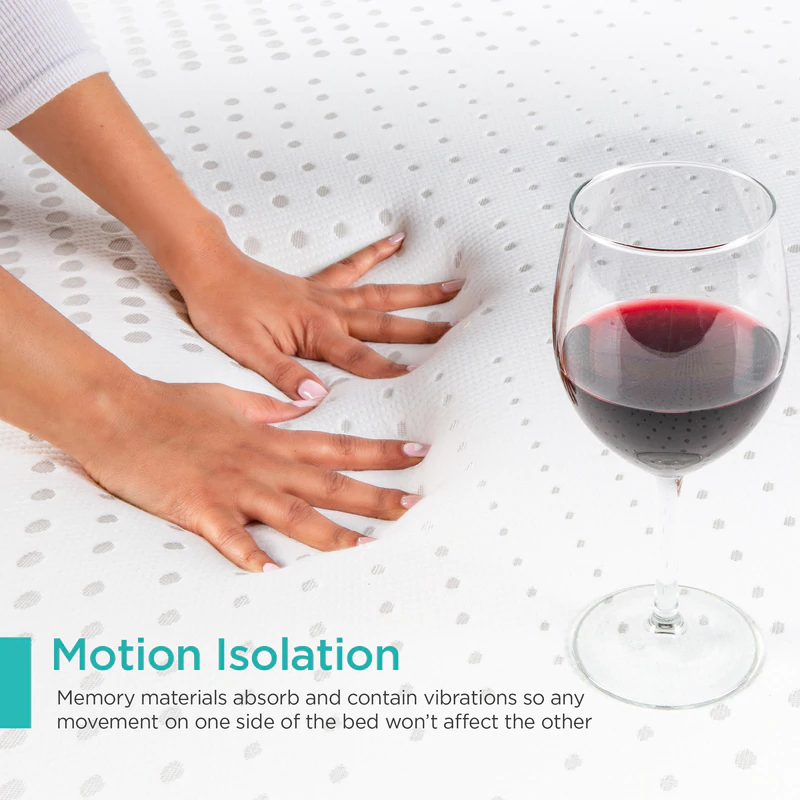A latex mattress, crafted from rubber tree sap, blends latex foam with either springs or reflex foam, offering a comfortable, supportive, and long-lasting sleep surface. Latex is celebrated for its pressure-relieving properties, longevity, hypoallergenic features, and eco-friendliness.
If you’re considering buying a new mattress, you might be curious about latex mattresses. Perhaps you’ve heard about the advantages of latex but aren’t sure if it’s a worthwhile investment. Or maybe you’re still unfamiliar with latex mattresses and their benefits.
With so many options to choose from, finding the perfect mattress can be daunting. Without sufficient information, you could make a decision that doesn’t match your requirements. That’s where this guide steps in.
By the end of this guide, you’ll have a comprehensive understanding of latex and how it can benefit you. You’ll learn the differences between the Dunlop and Talalay processes and how latex compares to other materials like memory foam.
So, if you’re prepared to make an informed decision about your sleep, continue reading.
Types Of Latex & How Is It Made?
Latex originates from a milky sap harvested from the Hevea Brasiliensis (rubber) tree. The sap is whipped into a frothy foam and poured into moulds to create latex mattresses.
However, not all latex mattresses are created equal, and understanding what constitutes a top-quality latex mattress is essential. Synthetic latex emerged due to the time and cost associated with producing all-natural latex.
Why?
Rubber trees must be at least 7 years old before they can be tapped and harvested for latex.
Types of latex:
- natural latex mattresses
- synthetic latex mattresses
- blended latex mattresses
Natural latex mattress
Natural latex is widely considered the finest latex. A natural latex mattress is one of the most long-lasting and eco-friendly options available. Natural latex comes in two forms:
Dunlop
Dunlop latex is the original manufacturing method for latex foams, involving whipping the latex into a frothy foam, baking it in a mould, washing the foam to remove particulates, and baking it again to reduce moisture.
This process results in a denser and firmer foam as the foam settles at the bottom. Dunlop latex foam is commonly used as a support or core layer in mattresses.
Talalay
Talalay latex is more labour-intensive and costly than Dunlop latex. The process consists of whipping the latex into a frothy foam, vacuum sealing it in a mould, allowing it to expand, flash freezing, baking, and washing.
These additional steps produce a more consistent texture, yielding a softer and less dense foam. Talalay latex is, therefore, well-suited for comfort layers.
Synthetic latex mattress
If you have a latex allergy but still desire the feel of a latex mattress, a synthetic latex mattress is your best bet. Synthetic latex mattresses recreate the sensation of natural latex using artificial ingredients, often derived from petroleum chemicals. These chemicals help mimic the molecular structure of natural latex.
Though synthetic mattresses are more affordable than natural latex, they are generally less bouncy and have a shorter lifespan. Synthetic latex degrades faster than natural latex because artificial ingredients aren’t as durable as natural latex. Additionally, synthetic latex can retain moisture, causing heat retention and exacerbating issues for hot sleepers.
Blended latex mattress
As the name suggests, blended latex combines both natural and synthetic latex. Blended latex lasts longer than synthetic latex but is less expensive to manufacture than all-natural latex.
Blended latex mattresses are an excellent option for those willing to spend a bit more on their mattress but are hesitant about the price tag of natural latex mattresses.
What’s The Difference Between Latex And Memory Foam?
Latex and memory foam mattresses are two of the most popular types of foam mattresses. They are also both known to conform to body shape. However, their main difference is their overall feel.
Once laid on, memory foam slowly conforms to the body and returns to its original form when you get up. A latex mattress has a more bouncy and responsive feel and doesn’t contour as much as memory foam.
Because of this property, the following are also affected:
Durability
Since memory foam is softer and latex is firmer, all-natural latex foam mattresses tend to be more durable over time. The denser structure of latex foam makes it more resistant to sagging over time than memory foam mattresses.
Temperature Neutrality
Since memory foam hugs well to the body, while latex foam has a bouncy feel, latex foam feels cooler when laid on. So if you’re a hot sleeper, then choose a latex mattress. A latex mattress doesn’t hug much to the body or absorb your body heat as much as traditional memory foam mattresses.
Motion Isolation

Latex foam is made from rubber, making it bouncier than memory foam. Memory foam hugs the body well while latex foam bounces back a little when laid on. Although latex foam does well on motion isolation, too, memory foam is the winner in terms of motion isolation.
Is latex firmer than memory foam?
Latex foam provides more bounce and is more responsive than memory foam. Because of this, the general feel of the latex foam is perceived to be firm since it doesn’t give that sinking feeling, unlike when you lay on memory foam.
Are latex mattresses firm or soft?
Latex mattresses are available in a wide variety of firmness, from very soft to very firm. Think of it like rubber material. Latex mattress firmness will depend on the type of latex.
- Natural latex is softer than synthetic latex.
- Dunlop latex is firmer than Talalay latex.
More importantly, firmness is subjective, depending on your body weight. If you are of a lighter body type, a mattress may feel more firm for you than a heavier person because you’re not exerting as much pressure on the mattress. Therefore it is crucial to test out a mattress yourself when you buy.
Are latex beds good for side sleepers?
Latex beds can be good for side sleepers. Latex beds can also be bad for side sleepers. Let’s talk more about that.
Latex beds are good for side sleepers, given that the latex bed has medium-firm firmness. While lying on the side, a medium-firm latex mattress can give cushioned support and contouring. This can ensure optimal spinal alignment and pressure relieving on the hip and shoulder because of its ability to adjust to body shape.
On the other hand, if you happen to have a firm latex mattress and a side sleeper, this could be bad for your sleeping posture. Your hip and shoulder won’t sink into the mattress enough, and you’ll be left with a misaligned spine, shoulder pain, and back pain.
Many latex manufacturers have different options for mattress firmness. One example is this mattress offered by Latex Sense, where you can choose from medium-firm and firm comfort levels.
Is A Latex Mattress the best for you?
Finally, consider what matters most to you as you weigh the advantages and disadvantages. Budget, health concerns, chemical worries, and lifestyle will all play a factor, and each person will have their own set of concerns.
Natural latex mattresses make a convincing list of advantages and are regarded as one of the best-rated alternatives available.
2 Sources
- World Wildlife Fund
https://www.worldwildlife.org/magazine/issues/winter-2016/articles/making-the-production-of-rubber-better-for-the-planet - McCay, S., & Mahlberg, P. (1973). Study of antibacterial activity and bacteriology of latex from Asclepias syriaca L. Antimicrobial agents and chemotherapy, 3(2), 247–253.
https://www.ncbi.nlm.nih.gov/pmc/articles/PMC444395/






